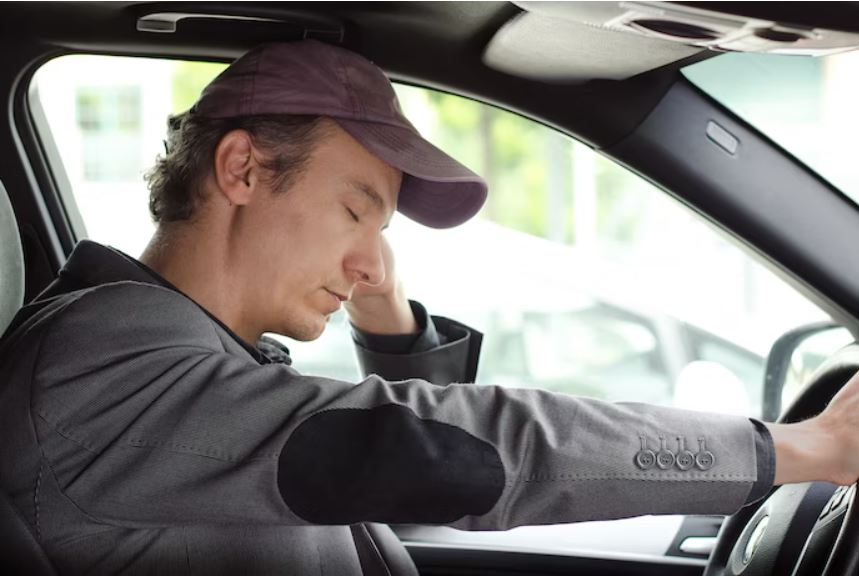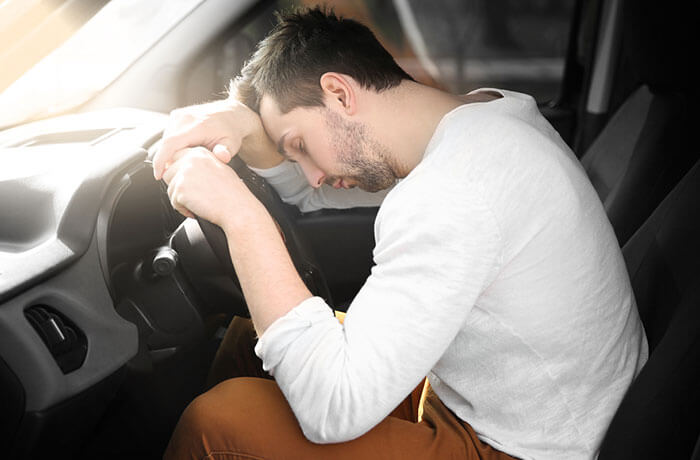
Kiwi road bosses say driver fatigue really can be a matter of life and death.
“People often think that driver fatigue means falling asleep at the wheel. Falling asleep, however, is an extreme form of fatigue.
“Fatigue is tiredness, weariness or exhaustion. You can be fatigued enough for it to impair your driving long before you ‘nod off’ at the wheel,” say Waka Kotahi.
Why fatigue is a problem for drivers
As a driver, fatigue can cause you several problems including:
- reducing attentiveness and alertness to dangers
- slowing your reaction time and decision-making ability
- poor lane tracking and maintenance of speed
- decreasing your tolerance for other road users.
Being tired can also cause you to drift in and out of sleep without knowing it. Sleep experts call this microsleep. If this happens while driving, it can cost you your life.
These naps can last between three and five seconds and are the main cause of fatigue-related crashes where the driver runs off the road.
In 2020, fatigue was a factor in 21 fatal crashes and 113 serious injury crashes. These crashes are usually the most serious because the driver doesn’t brake before colliding with another object.
Who’s affected by driver fatigue
While all drivers are likely to experience fatigue to some degree, fatigue is more likely for people in the following groups – ultimately leading to a higher crash risk:
Young people – may have lifestyles that involve frequent late-night activities, not getting enough sleep, taking risks and being on the roads during night-time hours.
Shift workers – are more likely to have disrupted sleep patterns, which lead to fatigue. Night shift workers have the greatest risk of sleep disruption.
Commercial drivers – have a high risk of fatigue-related crashes because they may work in shifts, drive at night, start early in the morning, and work in isolation.
People with sleep disorders – which disrupts the quality and quantity of sleep a person gets.
Fatigue often combines with other factors, such as substance use and speed, to cause road crashes.
Substance use such as drink driving or medication related impaired driving is particularly dangerous in combination with fatigue. Alcohol can affect a driver’s alertness long before the legal limit is reached. Any amount of substance use can combine with fatigue to affect your driving.
Speed and fatigue are also a bad combination. As your speed increases you have less time to react and when you’re tired, fatigue also slows your reactions. Even when speed doesn’t cause a crash, it’s what will most likely determine where someone is killed, injured or walks away from the crash.

Key factors that affect driving ability
Crashes involving fatigue
Between 3am and 5am our body clocks (circadian rhythms) programme us to feel sleepy. There is also a secondary peak in sleepiness between 3pm and 5pm. This is the time of the day when physical and mental performance is at its worst. There are broad peaks in fatigue-related crashes where people are killed and seriously injured in the early morning and through the afternoon.
Signs of driver fatigue
Look out for the following signs that you are entering, or are in, the ‘fatigue danger zone’ for driving:
- you begin to blink
- you can’t stop yawning
- you have trouble keeping your head up
- your eyes close for a moment or go out of focus
- you have wondering, disconnected thoughts
- you find that you can’t remember driving the last few kilometres
- you miss a gear
- you miss a road sign or exit
- you find you have slowed unintentionally
- you brake too late
- you drift over the centre line or onto the other side of the road.
Reduce the risk of having a fatigue related crash
While driving:
- prepare your journey properly and plan where you can take a safe break from driving
- stop in a safe place when you feel tired.
- try and have a short nap of no more than 15 to 30 minutes. Much more than this and you might wake up feeling groggy.
However, these should only be considered emergency counter measures. As a driver you should not be relying on these on a regular basis, but instead should consider what changes you can make to your lifestyle which will help you get the sleep that you need.
Don’t be tempted to keep driving when you are tired just because you are close to your destination. Many tiredness-related collisions occur close to home because the driver has relaxed, and the body takes this as a signal that it is ok to fall asleep.
Many of the things people do to stop themselves falling asleep at the wheel are only effective for a very limited time. The following do not work and will refresh you only for a short while:
- Drinking caffeine.
- Getting out of your vehicle to stretch your legs.
- Opening the window.
- Turning up the radio volume.
Once fatigue has set in, no amount of willpower will keep you awake. The only answer is sleep and you should stop for a short nap or seek assistance to get home.
It really can be a matter of life and death.




































